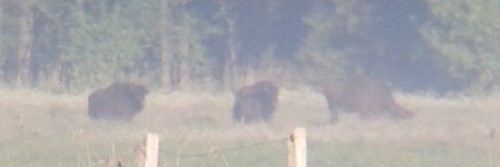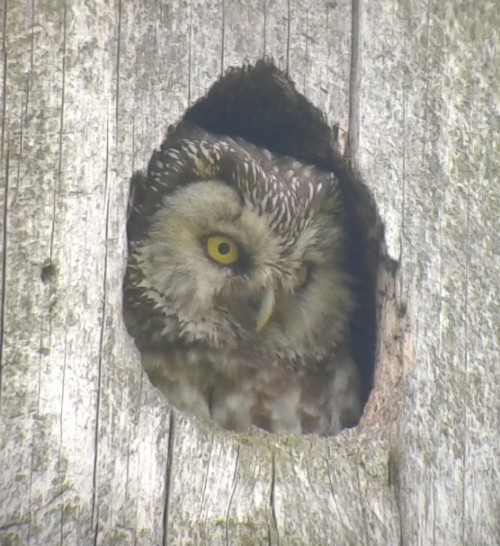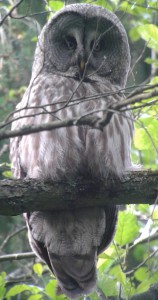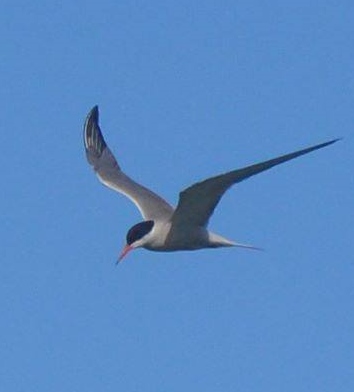5th June 2015
Like a bird
A rewarding part of being a diplomat is celebrating bilateral co-operation. It’s a joy to see a common interest bringing together people from two countries. Some of the best examples are from non-state organisations.
Last week, I visited one of Belarus’ jewels, the Belavezhskaya Pushcha, some of the most ancient woodland left in Europe. The Pushcha is a remarkably beautiful place, and perhaps best known for being one of the few habitats for the European bison, or zubr as we call them in Belarus.
I went in the company of birdwatchers from Belarus and Britain. I don’t get out of Minsk enough and the opportunity to visit the Pushcha was too good to miss. So I spent two days happily away from the cares of my job, and instead wandered around the wilderness looking at or, more often, listening to many different birds. But we also had to find bison, which we did early one morning.

A flying bird is an uplifting sight to behold. Birds are free, or so it appears, because while they can fly, we are stuck rooted to the ground. Humans dreamed for many centuries that they could fly and soar like a bird. Sadly, the reality of most modern flying is very far from the grace of bird flight.
I used to go out bird watching when I was young. I still can identify some species by sight, and a few from the calls. But it’s seeing some species flying so gracefully, like terns along the rivers and the lakesides, or large birds soaring without flapping their wings, like eagles or buzzards, that I enjoy most.
The birdwatchers were there because of connections between bird watching groups in Britain and Belarus. The hosts were representatives of APB – Ахова Птушак Бацькаўшчыны in Belarusian (literally “Protection of Birds of the Homeland” but the organisation is called “Birdlife Belarus”). Their aim is to help conserve the bird diversity of Belarus, and educate and encourage people of Belarus about watching birds and protecting nature.

APB has a longstanding relationship with one of the largest and oldest nature organisations in Britain: the Royal Society for the Protection of Birds (or RSPB) which has over one million members. The RSPB was originally called the Plumage League set up by Emily Williamson in 1889 who objected to the trade in feathers for clothing. Today its aim is the conservation and protection of birds and their habitat. The organisation owns and manages 200 nature reserves in Britain.
Britain has other bird organisations. The British Trust for Ornithology collects evidence of changes in bird populations to help protect them. Members take part in bird ringing – putting a metal or plastic ring on the legs of birds to track their movements and life history. The internet allows thousands of volunteers to contribute towards the surveys either by recording sightings and populations of birds or giving results of ringed birds, and contribute to “bird atlases”. This is an example of “citizen science”, the participation of amateurs in scientific research through mass collection of useful data.
Then there is the British Ornithologists’ Union, which focuses on the biological studies of birds through scientific research. The BOU was founded in 1858 and produces the scientific journal “Ibis” about birds all over the world.
And to cap them all is BirdLife International which is based in Britain, and acts as an umbrella organisation for 120 bird organisations around the world, including APB from Belarus and RSPB in Britain.
APB and RSPB have worked together in the last 10 years so that APB has become the largest conservation organisation in Belarus. It works with the Belarusian government on conservation issues, and collaborates with international organisations on projects. Most importantly for me, they have helped me visit some wonderful areas of Belarus, including my visit last week to the Pushcha.
The most satisfying part of our visit was being guided to some rare owl nests. I was very lucky to see two very different species: the large great grey owl, and the very much smaller Tengmalm’s owl, which is named after a Swedish naturalist, who lived in the 18th century. Tengmalm was widely travelled in Europe and met, amongst others, Joseph Banks, who had accompanied James Cook on his first voyage of discovery to the South Pacific. Despite the wars between Britain and France in the early 19th century, Banks made great efforts to keep in contact with other scientists in Europe.

As well as watching birds and the bison, I learnt a new skill – that of “digiscoping”: using a digital camera to take photographs through a telescope. I managed to take these photographs with the digital camera of my mobile phone, by holding it steady over the eyepiece of the telescope. I enjoyed the childlike sensation of experiencing something new and quite wonderful! Unfortunately, you can’t catch a bird in flight by “digiscoping”, but I have taken pictures of terns over the Svislach river in Minsk, like the one here.

Belarus has a fantastic variety of birds to see. I think there is great potential for more birdwatchers to come and see spotted eagles, marsh harriers, cranes and other big birds. But there are also those small birds whose morning singing was such a delight to hear in the Pushcha – even at five o’clock in the morning.
I hope others can escape their jobs to visit and see the joy of seeing wild birds in flight. It was certainly good for me.
Thanks Bruce, as usual a lovely article.